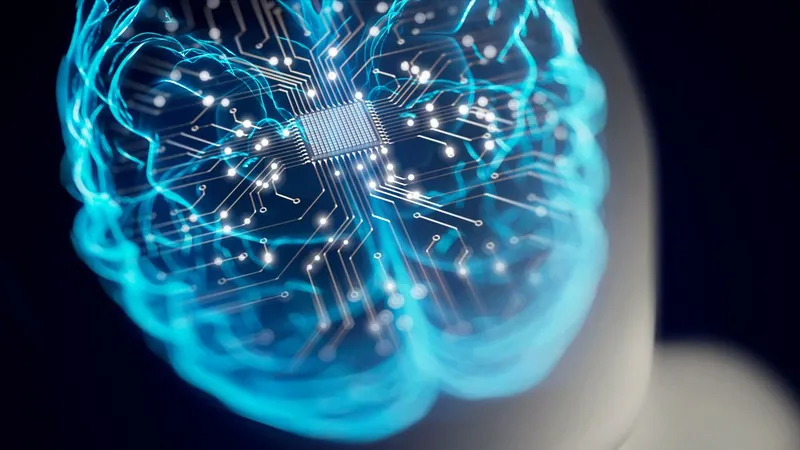
Unlocking the Future of Computing: How 'Edge of Chaos' Neuroscience Could Revolutionize Computer Chips!
2024-11-14
Author: Emma
Introduction
Researchers are on the brink of a groundbreaking advancement that could transform how computer chips operate, bringing them closer to the incredible efficiency of the human brain. Imagine a world where computer chips can transmit information faster and more effectively, mimicking the behavior of superconductors – this might soon be a reality thanks to the innovative concept of operating at the “edge of chaos.”
The Study
This fascinating study, published in the prestigious journal *Nature* on September 11, highlights how scientists have managed to create conditions at this unique transition point, where order meets disorder. This pivotal state allows for rapid information transmission in electronic devices, paving the way toward chips that require fewer external amplifiers and could significantly reduce signal loss due to electrical resistance.
Understanding the Edge of Chaos
But what does "operating at the edge of chaos" actually mean? Many scientists believe that the human brain operates on similar principles—particularly through its neurons, which efficiently transmit signals without the need for external boosters. Neurons feature axons, which can stretch from mere millimeters to over three feet long, transmitting electrical signals while encountering minimal resistance compared to traditional wires.
Replication in Non-Biological Materials
By harnessing this self-amplifying property found in biological systems, researchers have started to replicate it in non-biological materials, specifically lanthanum cobaltite (LaCoO3). By applying the right current to this material, the researchers were able to amplify small electrical fluctuations without resorting to additional energy-consuming components typically required in electronic devices.
Revolutionary Findings
The researchers carried out a series of experiments involving the positioning of wires atop the LaCoO3 to observe the amplification of voltage signals. What they found was revolutionary: the device could enhance signals using energy from the same current that maintains the edge of chaos, rather than dissipating it as heat — a common issue in conventional electronics.
Implications for Future Technology
The implications of these findings are enormous. The team suggests that this method could lead to computer chips that emulate superconducting properties at normal temperatures and pressures, cutting down on the thousands of costly repeaters and buffers typically used in today's technology.
Conclusion
As we stand on this exciting cusp of technological innovation, the prospect of faster, more efficient computer chips that mirror the complexity and efficiency of the human brain appears tantalizingly within reach. This could not only redefine computing power but also open doors to advanced applications in artificial intelligence and beyond. Get ready for a leap into a new era of computing that blends biological insight with cutting-edge technology!









 Brasil (PT)
Brasil (PT)
 Canada (EN)
Canada (EN)
 Chile (ES)
Chile (ES)
 España (ES)
España (ES)
 France (FR)
France (FR)
 Hong Kong (EN)
Hong Kong (EN)
 Italia (IT)
Italia (IT)
 日本 (JA)
日本 (JA)
 Magyarország (HU)
Magyarország (HU)
 Norge (NO)
Norge (NO)
 Polska (PL)
Polska (PL)
 Schweiz (DE)
Schweiz (DE)
 Singapore (EN)
Singapore (EN)
 Sverige (SV)
Sverige (SV)
 Suomi (FI)
Suomi (FI)
 Türkiye (TR)
Türkiye (TR)